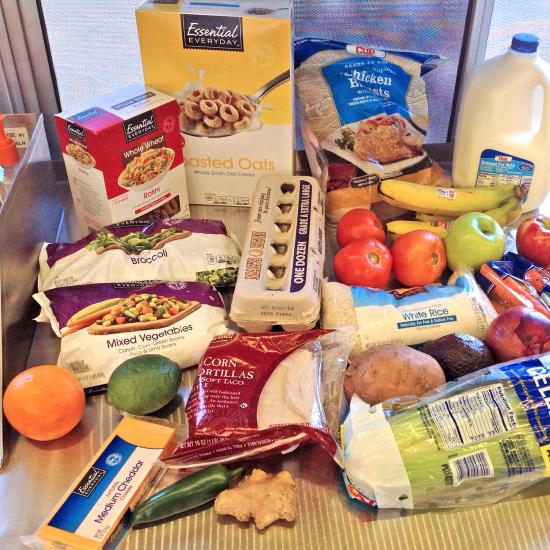Food Deserts: Why It Costs Much More to Try to Eat on $29 a Week
Much has been said recently about Gwyneth Paltrow’s Twitter post showing the $29 worth of food she attempted to live on last week in order to raise awareness about cuts to the Supplemental Nutrition Assistance Program (SNAP), formerly known as the food stamp program.
Putting judgments aside (and there have been plenty), what Paltrow has done is spur conversation around food insecurity and the fact that more than 47 million people in the U.S. are feeding themselves and their families on very little. These resources are further diminished with continued cuts to the SNAP program.
In addition to these cuts, however, is the issue of food access. In the U.S., 23.5 million people live in “food deserts,” or areas where there’s no grocery store to buy fresh fruits, vegetables, and other whole foods needed for a healthy diet. Food deserts are typically located in low-income neighborhoods where fewer people can afford a vehicle.
On top of having to live on $29 worth of food per week (the average SNAP benefit amount), many residents are left with the food options in their neighborhood: convenience stores and fast food restaurants selling junk food.
Changing the Dynamic
At Wilder, we’re working to change this dynamic through the Twin Cities Mobile Market, a grocery store on wheels that brings fresh, healthy foods at below market prices to areas where people experience barriers accessing affordable, healthy foods.
Why does this matter? Below left is a photo of what $29 will buy you at a convenience store in Saint Paul, Minn., versus what $29 will buy you on the Mobile Market (below right).
As the photo on the left shows, living in a food desert can come with a high price tag. The costs, however, are often far greater than the price of food.
Here’s a breakdown of just some of the added costs:
-
Financial Costs: Fresh, healthy foods cost more at corner stores and convenience stores – if you can find them (see Chung & Myers, 1999). Conversely, it can be cheaper to eat junk food: you could feed a family of four off the dollar menu at McDonalds for less than what it would cost to buy ingredients for a salad. But, that brings us to another set of costs.
-
Health Effects: Research shows that living in a low-income neighborhood and/or living in a food desert directly correlates with increased rates of obesity, diabetes, and other diet-related diseases that significantly impact a person’s qualify of life and lead to earlier death. More here.
-
Health Care Costs: Healthier eating could prevent $71 billion per year in health care costs. State and federal governments spend one thousand times more to treat chronic disease than to prevent it ($1,390 vs. $1.21 per person each year).
-
Educational Costs: One in six children now suffers from a disability that affects their behavior, memory, or ability to learn. Research shows that what a child eats positively or negatively impacts behavior and learning ability.
-
Social Capital Costs: People are extremely resourceful and will go to great lengths to feed their families. We often hear stories from residents of how they coordinate car sharing and childcare services with friends and family members so a mother can get to the grocery store. In many cultures, this type of cooperative living is a norm; but in others, it’s not a norm, and adds personal and relational stress to an already stressful situation. More here.
In addition to these and other costs, there’s the fact that access to whole, healthy foods is a basic right everyone should have – not just those who live in middle or higher income neighborhoods.
How Can You Help?
The Twin Cities Mobile Market is doing what we can to make it more feasible and affordable for those with the least access. Here’s what you can do to help:
- Contact your federal legislators and ask them to oppose any additional cuts to SNAP.
- Learn more and support food access solutions being proposed in Minnesota through the Minnesota Food Charter.
- Donate or volunteer with the Twin Cities Mobile Market.
- Join the conversation: What do you think needs to happen to increase food access for everyone? Find us on Twitter and Facebook.
Leah Porter was manager of the Twin Cities Mobile Market, a grocery market on a bus that brings fresh, affordable foods directly into under-resourced markets. The Twin Cities Mobile Market is now part of The Food Group.
